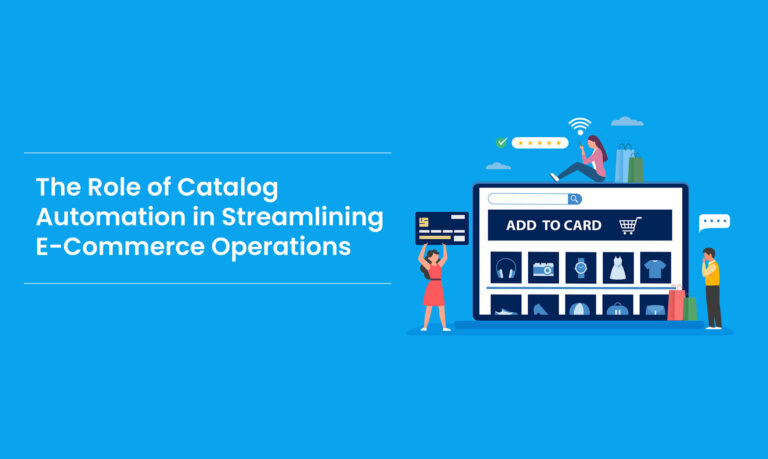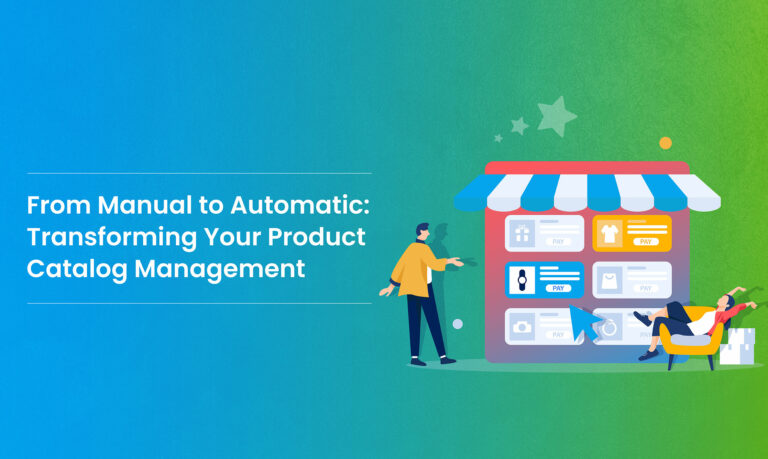Delve into how image-to-text services streamline data extraction processes, enhancing efficiency in cataloging and information management.
In the contemporary digital world, where visual content and images dominate online platforms, the ability to convert photos into text is crucial. For many different industries, optical character recognition (OCR), which translates photos to text, is crucial. Its uses span from enabling efficient data management to enhancing accessibility to individuals with visual disabilities. In this blog, we’ll look at the intricacies of image-to-text conversion, including its technology, procedures, applications, challenges, and potential future developments.
The Big Question
Image-to-text calls for an OCR(Optical character recognition) technique, in which the image text is converted to text. Its application is not restricted to this field only but may be extended to the automation of processes, searchability, provision of access, and digitization of information. OCR technology substitutes photographs with machine-readable text, thus improving the speed with which any digital system recognizes the images. Operating systems and services are increased by this( automation).
Applied Technologies on Text-to-Image
Technology Using Optical Character Recognition (OCR): The optical character recognition (OCR) technology holds the key to image-to-text converter. The process involves using different algorithms to examine every pixel in detail to find patterns corresponding to different letters, numbers, and symbols. While OCR in traditional optical character recognition systems (OCR) is based on the principle of template matching and the recognition of patterns, we developed our custom deep learning algorithm for this specific OCR task.
Neural Networks and Deep Learning: By acquiring staggering topologies and deep learning, recent OCR innovations have been boosted. These models are then experienced by the training of large data sets, which are themselves very skillful in detecting the most complex and discrete patterns across all kinds of fonts, languages, and picture appearances. Accuracy and reliability are ensured by the use of convolutional neural networks (CNNs) and recurrent neural networks (RNNs) that find more application in newer OCRs.
NLP, or natural language processing: Nonetheless, OCR solutions are often accompanied by NLP applications apart from pure text recognition in the scanned image to give a sense of what the recovered text is about. NLP, which is the next step in the processing of OCR, ultimately brings more efficiency, higher usefulness, and usability, i.e., it enables further processing, interpretation, and organization of the gained text.
Image-to-Text Conversion Process
Below is the process of image-to-text conversion:
- Prior to processing: Images go through preprocessing techniques to improve legibility and eliminate noise before text extraction may start. Image enhancement, noise reduction, contrast correction, and normalization are examples of preprocessing techniques. These actions are intended to enhance the image’s quality and increase its suitability for precise text recognition.
- Feature extraction: The process of identifying and separating textual components from a picture after it has been preprocessed. Segmentation, edge detection, and contour detection are popular techniques for extracting features. These methods aid in separating text areas from the image’s backdrop and other visual components.
- Text Recognition: The main function of OCR is text recognition, which involves identifying text and converting it into a machine-readable format by analyzing the characteristics that were collected. OCR techniques use deep learning models to anticipate the textual content by comparing the detected patterns to a preset collection of character templates. Post-processing methods can be used to enhance accuracy and refine recognition outcomes.
- Post-processing: To verify and improve the retrieved text, post-processing procedures are performed following text recognition. This might include spell-checking software, context-analysis tools, and error-correction systems. Post-processing guarantees the quality and dependability of the transformed text while assisting in the mitigation of mistakes generated during the recognition step.
Use Cases and Applications
There are several uses for image-to-text conversion in a variety of sectors and fields:
- Accessibility Tools: The assistive technologies for people with visual challenges are accelerated by OMR. With image-to-text conversion, screen reading devices, Braille displays, and text-to-speech software would be at an advantage in aiding the visually impaired persons in reading the textual material.
- Document Digitization: OCR is applied for scanning and digitizing various documents; such archiving is actively used by healthcare, banking, and legal organizations. The OCR allows quickly getting, saving, and keeping documents on a system that can be edited or looked for in digital forms, not paper-based ones.
- Content Indexing: OCR technology, library databases and archives, and e-shop platforms are the tools applied for the searching process and data indexing. By utilizing the option of turning image-based content into searchable text, users can browse images on documents, photos, and product listings, to name just a few areas, for relevant information.
- Automated Data Entry: The instances of situations where human operators take data from documents such as invoices, receipts, forms, and other paperwork are reduced to the bare minimum by the Optical Character Recognition technology that makes data entry systems more productive. Hence, it enhances the efficiency of company operations. Not only does it reduce mistaken operation rates, but it also simplifies the process of data gathering.
- Translation Services: Using OCR, text from different languages may be translated, which makes OCR vital for multilingual translation services. OCR, coupled with machine translation systems, allows for seamless importation of text pictures, which is useful in localization and multilingual communication.
Challenges and Limitations
Despite its numerous benefits, image-to-text conversion poses several challenges and limitations:
- Problems with Accuracy: Handwritten writing, intricate typefaces, and deteriorated picture quality can cause OCR systems to make mistakes in text recognition. The accuracy of OCR algorithms can be impacted by variations in font styles, sizes, and layouts, particularly when working with irregular or badly scanned documents.
- Processing Duration and Necessary Resources: A photo-to-text converter can need significant processing power, especially when deep learning models are being used or a huge number of photographs are being processed. The scalability and real-time performance of OCR systems may be limited by processing time and resource limits, particularly in contexts with limited resources.
- Language and Context Understanding: OCR technology may need help deciphering the semantics and context of the text that has been retrieved, especially when dealing with unclear or context-dependent language. OCR algorithms face difficulties when it comes to comprehending sarcasm, colloquial language, and cultural quirks, which affect the precision and comprehensibility of the transformed text.
Advancements in Image-to-Text Conversion Technologies
Despite these challenges, ongoing research and development efforts continue to advance OCR technology:
- Increased Accuracy: OCR accuracy has significantly increased as a result of developments in deep learning architectures, including transformer models and attention processes. The robustness and accuracy of text recognition can be improved by these models’ ability to learn intricate text representations and contextual connections.
- Efficiency Gains: Processing times have gotten faster, and fewer resources have been used as a consequence of efforts to optimize OCR algorithms for speed and efficiency. Real-time OCR on embedded systems and low-power devices is made possible by methods including hardware acceleration, parallel processing, and model compression.
Impact of Image-to-Text Conversion on Business
The adoption of OCR technology has transformative effects on business operations and efficiency:
Streamlined processes: Business processes are streamlined by using OCR technology to automate data input, document processing, and content indexing operations. This minimizes mistakes and manual labor. By concentrating on higher-value tasks, employees may increase output and streamline operations.
Improved Searchability and Content Discovery: OCR makes it possible to increase searchability and content discovery in e-commerce and digital publishing, which improves the user experience overall. Image-based content makes it easy for users to discover pertinent goods, articles, or information, which boosts user pleasure and engagement.
Cost Savings: OCR technology lowers the costs of paper-based operations, including printing, storage, and human data input, by digitizing and automating document management procedures. Using OCR for document automation and digitalization can result in considerable cost and resource savings for organizations.
Future Trends and Possibilities
In the future, a number of options and trends will influence image-to-text conversion:
- Multimodal Integration: Multimodal interaction and content processing are made possible by the integration of OCR with other modalities, such as speech recognition and natural language comprehension. The integration of textual, audio, and visual data improves the usability and comprehensiveness of AI-powered solutions.
- Applications of Augmented Reality (AR): OCR technology allows for real-time text translation and recognition in the user’s surroundings in augmented reality apps. Text may be superimposed onto a user’s field of view using AR glasses and mobile devices with optical character recognition (OCR) software, enabling natural interaction with the real environment.
- Solutions for Edge Computing: On-device OCR capabilities are made possible by the spread of edge computing platforms, which also improve privacy and security by lowering dependency on cloud-based processing. Because of their offline capability and low latency, edge-based OCR technologies are appropriate for usage in remote or bandwidth-constrained contexts.
Conclusion
OCR technology makes image-to-text conversion possible. This is an essential procedure with wide-ranging effects on a variety of fields and industries. OCR technology is keeping the digital world innovative and changing, from improving accessibility and searchability to allowing automation and efficiency. Future developments in OCR technology, together with privacy protections and ethical issues, will influence the development of image-to-text conversion and open up new avenues for use in AI-driven products such as Rubick.ai.

